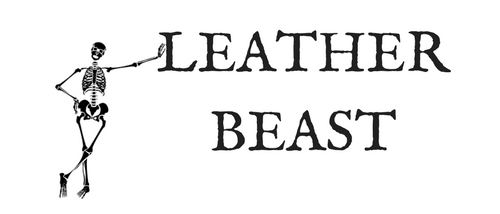10 Questions to Help You Determine Who Your Ideal Customer Is
In order to develop a product that you want to sell based on your ideal customer’s needs or wants, it is important to know who your customer is, what they look like and what types of things they’re interested in.
One of the first things that you should ask yourself is,
"Who am I targeting with this product that I either plan to make or have already made?"
Generally, you'll want to already have an idea of who you are targeting before you create your item.
Once you have an idea of who it is that will want your product, you will have a much greater chance at developing a marketing strategy geared towards attracting that person.
Now of course, there are some lucky people that just create and have the luxury of having an audience that likes and engages with anything that they create, no matter if they need it or not!
But this is a rare scenario.
If you have a following like this, that loves everything that you make no matter what it is, then that is amazing and you probably don’t need to read any further.
But if you don’t have this type of loyal and agreeable following or maybe you don’t have a following yet at all, then please stay with me.
Here are 10 questions you can ask yourself to get the ball rolling and determine who your ideal customer is.
What is the age range of my ideal customer?
Are they mostly male or female or is it an even split?
Where is my my audience located? In a city or a suburban or country area?
Are they located in a certain state or region of the country?
What are they interested in and what do they like or dislike?
Why would they want what you are selling? How does it benefit them?
Do they have hobbies?
What magazines and blogs or other publications do they read?
What do they do in their spare time?
What kind of income do they have?
Now if you're having trouble answering any of these questions, its OK.
Some of them are not all that easy to answer, especially if your audience doesn't really exist yet.
In this case, you'll be giving it your best guess based on what you make.
Try to think about what you make in the context of who would purchase it?
And then what other characteristics could you assume about them. Remember, we're trying to get at our ideal audience so this is not an exact science and we do have to generalize a bit.
I'll use myself as an example.
I make high-end leather handbags.
What makes them high-end?
They're hand saddle-stitched, constructed of high-quality vegetable tanned leather and solid brass hardware. The design is contemporary, minimalist and modern and so is my ideal customer.
So my answers to these questions would be..
What is the age range of my ideal customer? This person most likely has an established job or career, so 25-40 years old
Are they mostly male or female or is it an even split? Mostly female
Where is my my audience located? In a city or a suburban or country area? Mostly within a metropolitan city
Are they located in a certain state or region of the country? I'd say they're probably on either coast, NY and LA
What are they interested in and what do they like or dislike? They're interested in fashion, beauty products, health and art and music
Why would they want what you are selling? How does it benefit them? They appreciate high-end handbags and want to be on the cusp of the latest thing that is out there
Do they have hobbies? Travel perhaps
What magazines and blogs or other publications do they read? They might follow blogs like The Cut, W Mag and the Man Repeller
What do they do in their spare time? They enjoy having drinks with friends and going out to dinner at nice restaurants
What kind of income do they have? $50k+
See how i'm saying things like "mostly" or "maybe" or "perhaps". There is some wiggle room here with your answers.
Now once you have a back story to go along with your ideal customer, you can not only use that to create a better marketing strategy but also to better develop products that are geared towards what your idea customer actually wants and needs.
If you're still coming up empty with these questions, do some research.
We're going to get into this more next week, but if you're getting stuck, check out your competition and see who their actual customers are.
You can easily visit any of their social media channels and see who the most active and engaged members are. Then check out those profiles to get more info about them that will help to shape your idea of your ideal customer.
Obviously, there is some imagining that you can do here at first, but a narrower ideal audience means a more focused marketing approach and one that will get you closer to serving those who want to purchase your leathergoods.
What do you make and who is your ideal customer?


